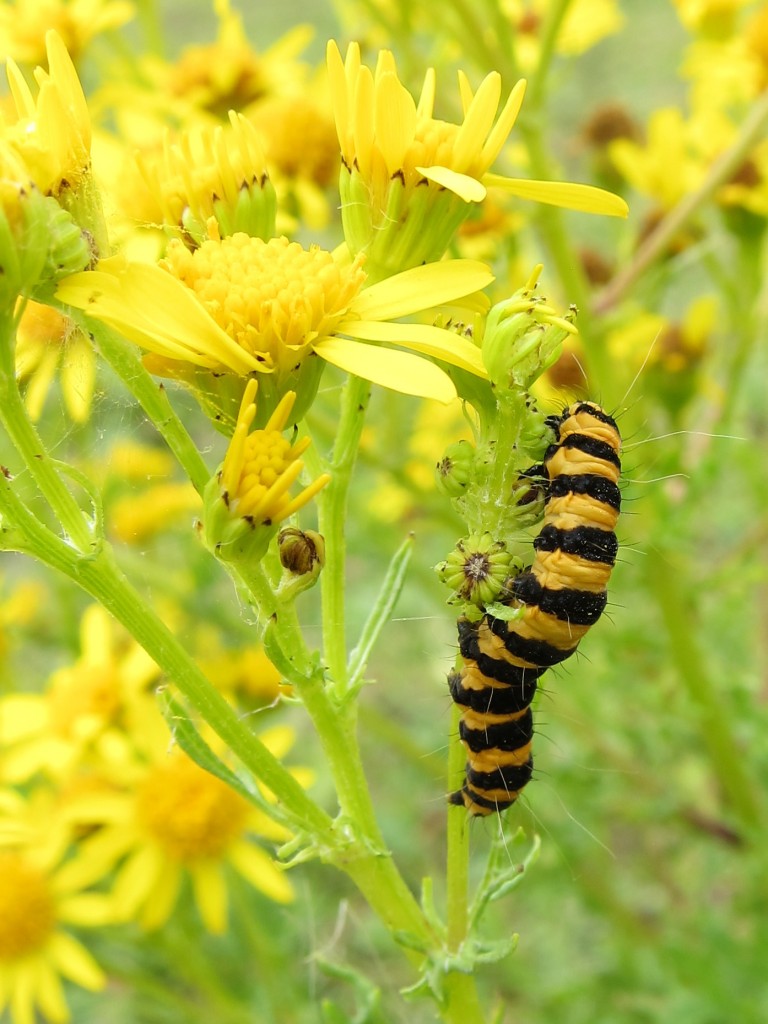There are many insects that make use of warning colours, particularly yellow and black, to ward off predators. Some are just faking it, others are definitely not for the eating.
 The cinnabar moth caterpillar definitely falls into the latter category. Unlike the adult moth which is black with smart red hindwings that really stand out in flight (they are named after the red pigment, cinnabar), the caterpillar is the standard stripy yellow and black. These caterpillars are usually found wherever there is flowering ragwort – they feed on both the flowers and the leaves. I’ve seen many plants completely stripped of any foliage – but whilst it might be a bit early in the season so far this year, I’m not seeing as many as I would expect – and I have wandered around several ragwort filled fields.
The cinnabar moth caterpillar definitely falls into the latter category. Unlike the adult moth which is black with smart red hindwings that really stand out in flight (they are named after the red pigment, cinnabar), the caterpillar is the standard stripy yellow and black. These caterpillars are usually found wherever there is flowering ragwort – they feed on both the flowers and the leaves. I’ve seen many plants completely stripped of any foliage – but whilst it might be a bit early in the season so far this year, I’m not seeing as many as I would expect – and I have wandered around several ragwort filled fields.
The ragwort of course is known for its toxicity to livestock (although the horses in the field I was looking in seemed perfectly fine) and it is this that the caterpillar takes advantage of. It stores the poisons from the leaves in its body and even keeps its toxicity once it has pupated to an adult. The moths are usually found in rabbit grazed fields (which this definitely was), but numbers are dropping – probably due to the removal of ragwort (declines of over 80% in the last 35 years have been reported). In New Zealand they took the opposite approach and introduced the cinnabar moth to control the ragwort.
I’m still trying to work out why they have such long hairs – if they were to stop them being eaten then I would expect them to be denser, besides, they’ve already gone to the trouble of being colourful, why have an extra defence?
It seems that the only danger to the caterpillars are farmers and each other – they are known to be cannibalistic.
Adults are on the wing in May and June, with caterpillars around in July and August – they spend the winter under the ground as a pupa.